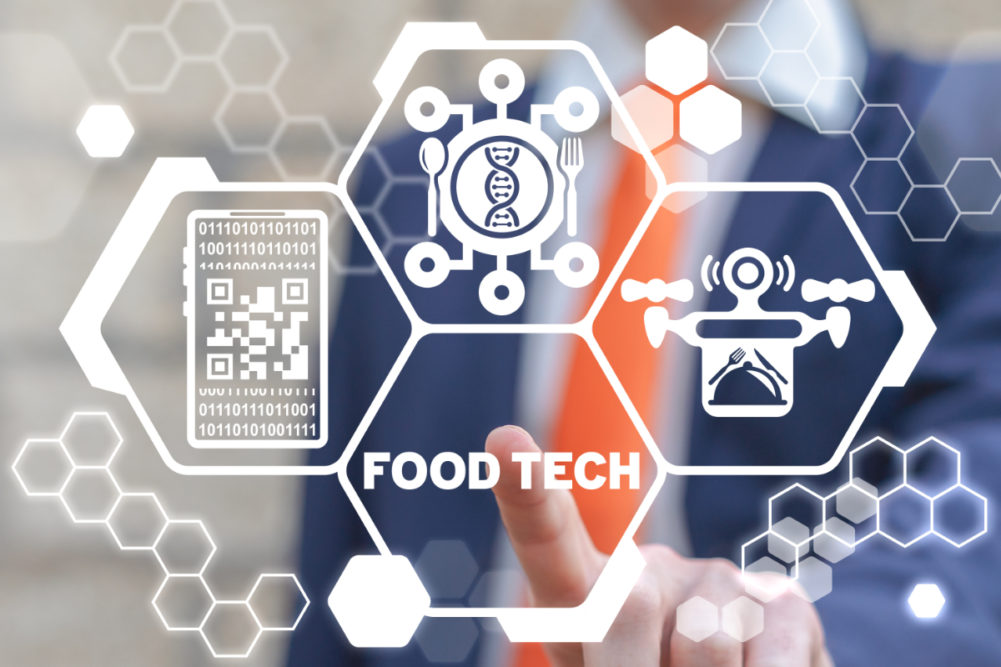EVANSTON, ILL. — Technology experts from consulting firm ZS Associates highlighted the various ways artificial intelligence is coming to life in food innovation and product development during a session at The Natural Products Expo West Virtual Week.
The session highlighted the emerging field of prescriptive analytics. Unlike predictive analytics, which uses collected data to come up with future outcomes, prescriptive analytics takes that data and goes deeper into the potential results of certain actions, said Brian Thompson, product manager at ZS Associates.
“This is where we give the computer the full set of information and data, train it using algorithms, and it is able to start to direct human actions to have the highest possible impact,” he said.
Business leaders historically have relied on promotional data, brand media spending, brand perceptions and consumer feedback to drive predictions around sales and distribution. Today, predictions about how food items are likely to perform in market have become more precise, due in large part to the availability of packaging data and label data that contains ingredient and nutritional information.
“Having packaging and messaging data at scale is making an incredible impact on our ability to understand the relationship between these attributes and sales,” said Tim Joyce, principal at ZS Associates.
New profile discovery is the broadest use case for AI new product discovery today, with innovators observing product attribute and product sales data across the grocery store simultaneously to detect trends earlier. As an example, products that have a higher protein content compared to the rest of their category and products that are much sweeter compared to the rest of their category come together as elements that make up a sweet, high protein profile.
“What we know from the success in the last decade of categories like meat snacks and Greek yogurt is that this profile has been pretty popular,” Mr. Joyce said. “If we look back in the history of the data, there are clues about the emergence of the profile across multiple categories.”
This type of analysis enables brands to understand what the impact of a profile might be if it was brought into a new category.
“We can answer the question, ‘What would the impact be if we made an organic version of this product, or what if we brought the sweet and smooth flavor profile of Greek yogurt into a category like cream cheese?’” Mr. Joyce said. “When we run a forecast, we’re not just learning what the potential of that item is. We’re learning what ingredients and what flavors are really driving the concept.”
Another area where AI is having an impact is the ability to optimize taste.
“It’s not only detecting flavors that are likely to be successful but also developing recipes that are going to be a big hit with consumers,” Mr. Joyce said.
Data around taste and flavor has typically involved collecting consumer feedback. Brands can use that data to understand how consumers respond to specific flavors, forms or other multi-sensory experiences, then connect that feedback back to product sales and product distribution to better understand the impact of those flavors and forms on consumer behavior.
“In the past we have conducted live taste tests in the lab and collected that data manually,” Mr. Joyce said. “What’s really going to break this wide open over the next decade is developing sensors that can actually taste food products in lieu of a human being and predict how a human is going to receive that multi-sensory experience.”
Other applications for AI include understanding which geographies are most likely to adopt new ideas or products, which banners are most likely to have the strongest performance with new items and what assortments are most likely to be successful on shelf at those banners. Investors also are utilizing AI to project a company’s financial performance earlier and more precisely.
“That’s because what's required to generate a forecast is not historical sales anymore, but just the product label and some conception of how it might be distributed,” Mr. Joyce said. “Investors can now rapidly value items instead of companies and know which ones have the strongest demand.”
Investors also are using AI to figure out which parts of portfolios can be trimmed and scaled back. As a result, the business development cycle is going to become much faster, Mr. Joyce predicted.
“I think there might be a data race between founders and investors to understand the drivers of strong ideas and to understand what really makes a concept great,” he said. “The best data is going to have a pretty big advantage.”





